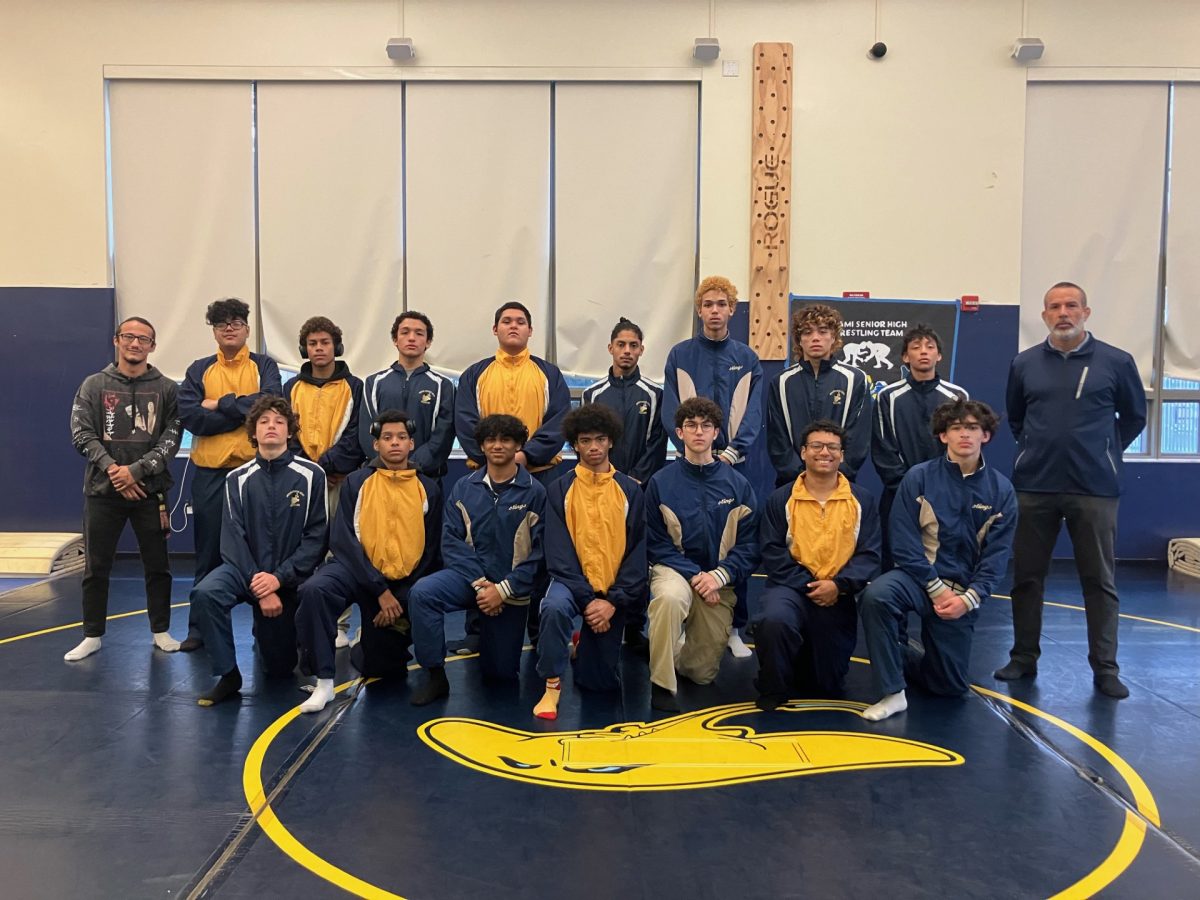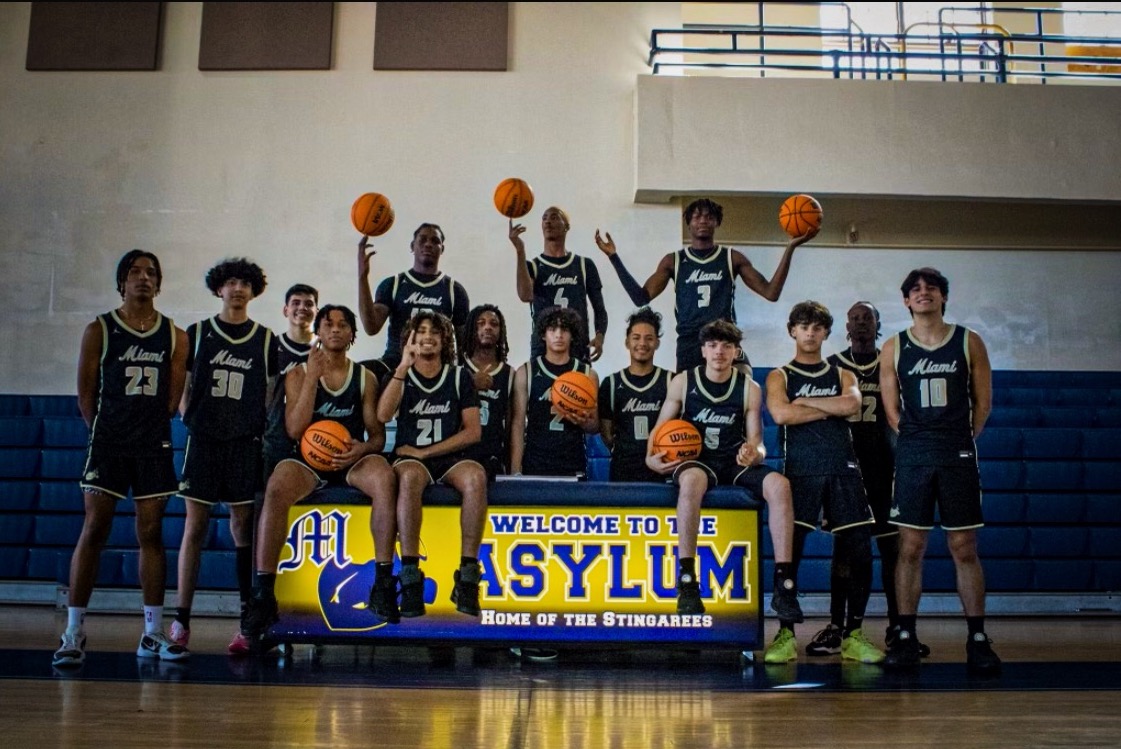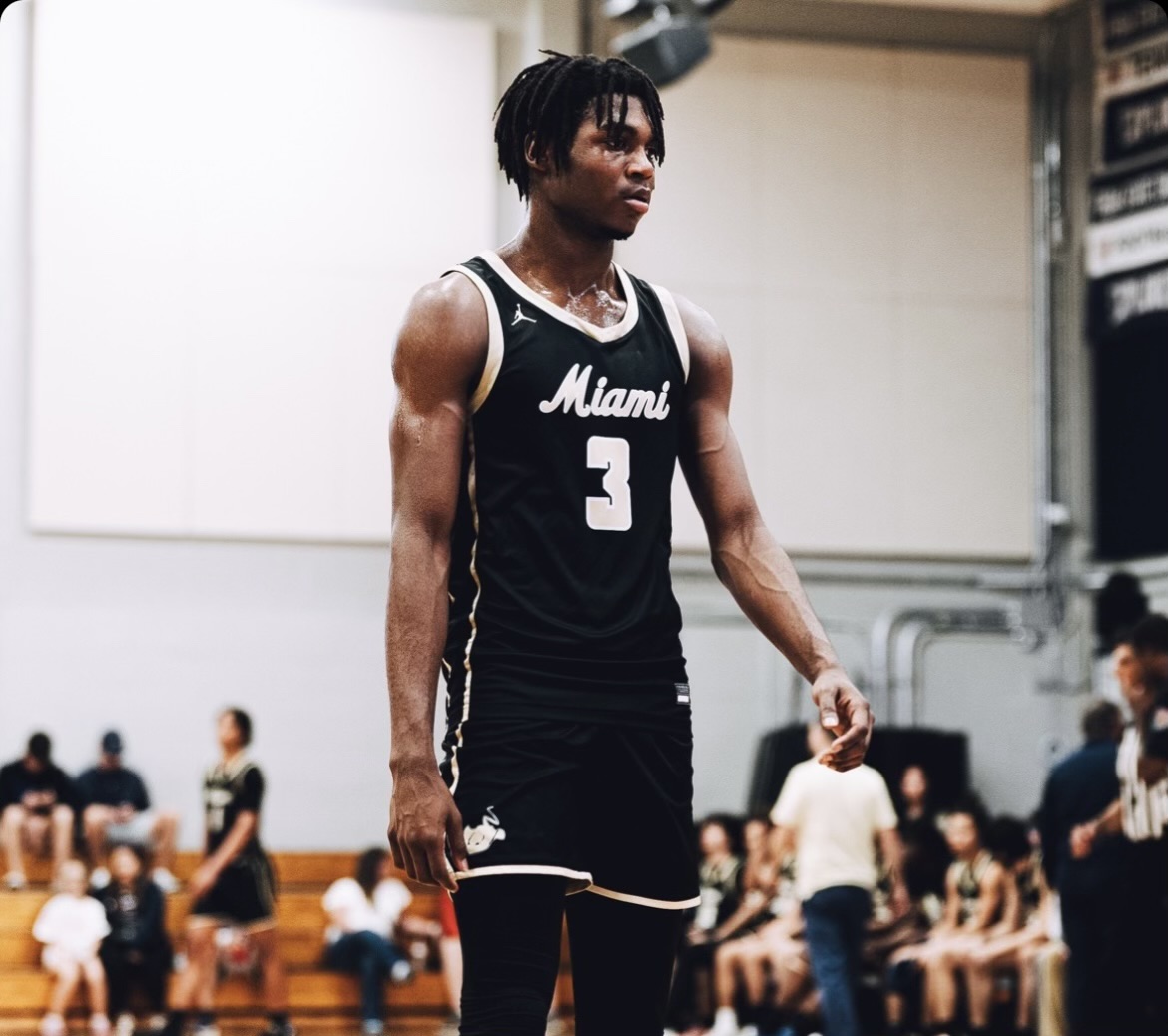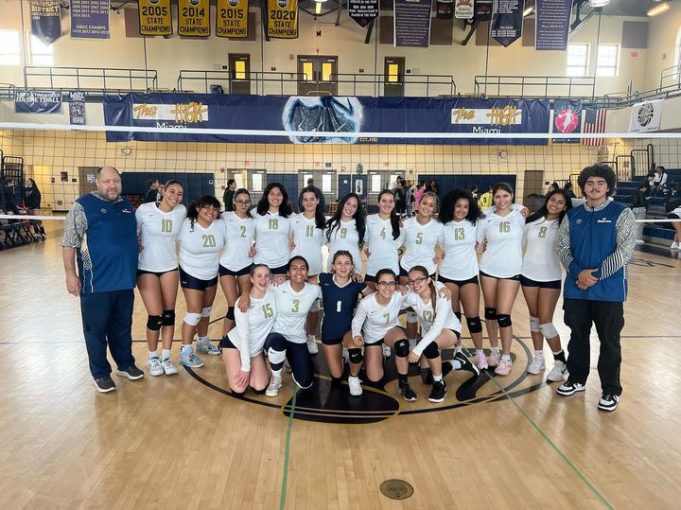Gun Control: For or Against?
May 17, 2018
In dual enrollment ENC 1102, students research and writer about problems that are of interest to them. For an exploratory narrative assignment in March, seniors Carl Rodriguez and Matthew Vangils both investigated gun control in the United States, an issue on which they both hold distinct points of view.
Carl Rodriguez says YES to more Gun Control

I’d been finding many research papers by authors who were medical or psychiatric professionals, and I was keen to find another kind of source on this topic. I was lucky to find a report by the Congressional Research Service, a public policy research arm of Congress, titled “Public Mass Shootings in the United States: Selected Implications for Federal Public Health and Safety Policy.” The CRS estimated that over the last three decades, public mass shootings have claimed 547 lives and led to an additional 476 injured victims. However, they specify that these shootings “account for few of the murders or non-negligent homicides related to firearms” annually in the US. This statement seemed morbid to me, as not only have the numbers increased significantly in the five years since this report was published, the claim of the statistic ignores everything else that a public mass shooting brings with it. Along with death toll, it brings trauma, public grievance, and a paranoia that threatens to precipitate more gun violence. For example, I remembered a man in 2016 who’d grown afraid of the recent mass shootings and decided to carry a gun for safety, and it ended in him accidentally shooting a woman in the theater. While this was no “mass shooting,” it only adds to the toll of injury and casualties caused by gun violence, whether accidental or deliberate. The report then went on to emphasize the point that these shootings accounted for an insignificant number in the total gun violence annually. They even cite an FBI Uniform Crime Report (UCR) showing how the number of violent crimes had decreased from 1.9 million in 1992 to 1.2 million in 2011. However, after looking more closely at this report by the FBI, the UCR included “murder and nonnegligent manslaughter, forcible rape, robbery, and aggravated assault, followed by the property crimes of burglary, larceny-theft, and motor vehicle theft.” This fails to isolate any violent crimes involving guns, therefore not showing whether or not gun violence has increased or decreased in the last two decades. I also went even further and looked at the UCR for 2000, 2011, and 2016, and found that from 2000 to 2011, the total murders by firearms went 8,493 to 8,583. However, in 2016, the total number of murders with a firearm was 11,004, a huge increase. The report then continues to talk about observations made regarding public mass shooters; that the gunmen “generally acted alone, were usually white and male, and often died during the shooting incident,” and that the average age was 33.5 years. I feel that this profile, however “general” and unusable to experts, reflects a growing trend in America, and the world, of white men becoming radicalized and adopting extremist views that lead to tragedies like the Charleston church shooting, where white supremacist Dylan Roof opened fire on a church during prayer service, killing nine African-Americans. Although I disagree with how this report was put together, it includes many statistics provided by the FBI and a legislative perspective on mass shootings, and in the conclusion, about gun violence in general.
To continue my research, I followed a common argument found in gun control debates – that mentally ill people are the ones perpetrating most of the gun violence. I needed to answer whether or not mentally ill people were more likely to cause gun violence, and found a research paper titled “Mental illness and reduction of gun violence and suicide: bringing epidemiologic research to policy,” written by Jeffrey W. Swanson, et al. The paper mentions the National Comorbidity Study Replication examined the rates of gun access, gun carrying, and safe storage among people with and without lifetime mental disorders in the community and found “no statistically significant association.” Most of the talk around gun violence involving mental illness is about “crazy, dangerous shooters” who people suspect of having been mentally ill for a while. However, the accusations of mental illness distract the public from the real causes of gun violence, and based on the results of this study, mental illness is not a factor. When I continued reading, I found that in a study conducted in the early 1990s by Charles Lidz et al., psychiatrists’ predictions of which patients would be violent, based on their clinical assessments in the emergency setting, turned out to be only slightly more accurate than flipping a coin. This pushed my suspicion that mental health professionals cannot accurately predict risks posed by patients. It is so common to hear people in the wake of shootings say, “If you see something, say something.” What does that mean? See what? If mental health professionals are no better than the flip of a coin when it comes to predicting future risk, how are we supposed to report potential shooters? It seems impossible to report someone and stop a tragedy from happening without infringing rights. They later analyze data from Employment Conditions Abroad (ECA) from three cities – Baltimore, St. Louis, and Los Angeles – and find that the 1-year population attributable risk of violence associated with serious mental illness alone was found to be only 4%, implying that if we somehow isolated and took out mental illness as a factor, 96% of violence would still be present. As seemingly reaffirming this data is of my beliefs, I have to point out that not only does this cover all violence, failing to isolate the relationship between mental illness and gun violence, the authors of the paper don’t mention the statistics for any violence related to mental illness, leaving me thinking that mental illness could still be a catalyst for violence. This understanding is essential to make effective gun control.
Matthew Vangils says NO to More Gun Control

To begin my research, I needed to understand the current issue in our country. I needed to know what exactly this Second Amendment that everyone is talking about was. I read an article by Patricia Smith, a writer and editor, called “Why We’re Still Arguing About GUN CONTROL: The Tragedy in Las Vegas has reignited the debate over America’s gun laws” from New York Times Upfront, an educational magazine for high school students. I learned that the 2nd Amendment of the Constitution was adopted in 1791 to guarantee an individual’s right to own and keep a firearm. I also learned that owning a gun is also not necessarily for self-defense, because it can be owned for sport, hunting, or just because you want to own it. I also learned that there are many more people than expected that want to protect individuals’ rights to own firearms as well as those who want to get rid of that privilege because freely owning guns only creates violence, creating the debate of gun control. This shocked me because I have firearms in my home from my father and I never find myself feeling like I’m in any immediate danger. I feel safe having guns in my house, and knowing how to use them in case of an emergency gives me a sense of self confidence, that I don’t need someone to look out for me all the time. I also know family friends that wish they had a firearm because of how the world is changing. These people are afraid of increasing violence in the world, and feel that the way to protect themselves from a corrupt person or a corrupt government is to be armed. After learning this information about the 2nd Amendment and what people want to do about it, I decided to continue reading to find out if gun laws are the same all over the United States.
After learning about gun control between states and countries, I wanted to know how gun violence now compares to the past. I picked up an article called, “America’s Ignored Epidemic,” written in a law magazine by a Los Angeles Times writer named Larry S. Stewart. I found that the rate of gun murders, at least for handguns, has gone up drastically since 1987. This is almost 30 years ago that gun violence has been becoming more and more of a problem. I feel like 30 years doesn’t seem that long ago, so this shows us that gun violence is growing as an issue very quickly, and we must figure out what we want to do about it. I also found that we regulate regular everyday products with federal safety standards, and we don’t even regulate guns, which to me is very surprising. We can regulate a children’s teddy bear, but not something that could potentially kill a person if put into the wrong hands? Learning about how gun violence has changed over the years has really opened my eyes to where we are as a country. If we can’t control an issue like this and it grows so drastically in 30 years, where can we see ourselves 50 years from now? I’m afraid for our country because it seems like we can’t learn how to work together on issues to save the lives of innocent people. After learning so much information about the past and the present, I decided to find out where we can start in resolving this issue.




